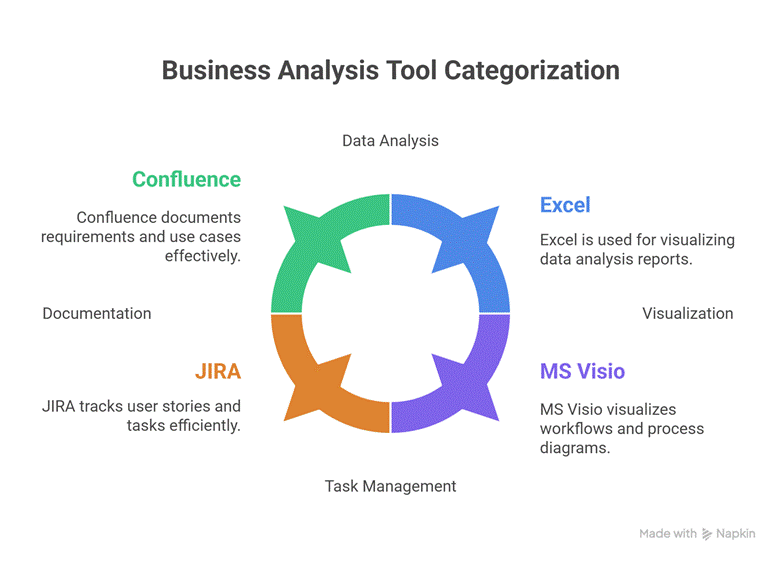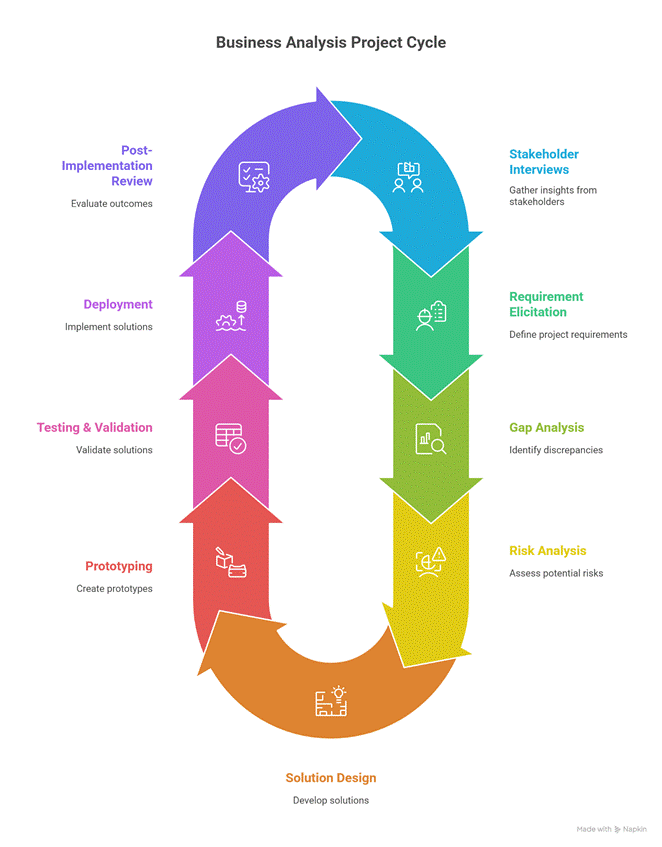Introduction
Business analysis is not just about documents, diagrams, and meetings; it’s about delivering tangible results that drive business growth. A case study approach helps aspiring analysts understand how theoretical concepts are applied in real projects, what challenges arise, and how success is measured. At Curiosity Tech (website: curiositytech.in, Phone: +91-9860555369, Email: contact@curiositytech.in), we train professionals using real-world projects so they can translate analysis into actionable strategies that improve efficiency, reduce costs, and create value.

1. Overview of a Successful Business Analysis Project
Project Context:
A retail client in Nagpur wanted to implement an online order management system to streamline sales, inventory, and delivery tracking. Their goals were:
- Reduce order processing time
- Minimize inventory discrepancies
- Improve customer satisfaction
- Ensure scalability for future growth
Role of Business Analyst:
The BA was responsible for:
- Requirement elicitation from multiple stakeholders
- Gap analysis to identify current vs desired state
- Risk assessment and mitigation planning
- Developing use cases and user stories for the development team
- Supporting testing and deployment
2. Step-by-Step Project Execution
Step 1 – Stakeholder Engagement
The BA conducted interviews and workshops with:
- Sales and operations team
- IT department
- Customers for feedback
- Vendors for system integration
Step 2 – Requirement Gathering and Documentation
- Use Case Example:
Use Case: Online Order Tracking
Actor: Customer
Trigger: Customer places an order online
Main Flow: Place order -> Payment -> Order confirmation -> Track delivery
Alternate Flow: Payment fails -> Display error -> Retry
- User Story Example:
As a customer, I want to track my order status in real-time so that I can plan for delivery.
Step 3 – Gap Analysis
A detailed gap analysis was conducted to identify:
- Manual inventory updates → Needed automated system
- Delayed order notifications → Needed instant alerts
- Redundant data entry → Needed single-entry workflow
Step 4 – Risk Analysis & Mitigation
| Risk | Likelihood | Impact | Mitigation |
| System integration failure | Medium | High | Conduct sandbox testing, phased rollout |
| Data migration errors | High | Medium | Backup and validation scripts |
| User adoption challenges | Medium | Medium | Training sessions and feedback collection |
Step 5 – Solution Design & Prototyping
The BA collaborated with developers to create prototypes and wireframes, ensuring alignment with requirements.
Step 6 – Testing & Validation
- Functional testing for workflows
- User Acceptance Testing (UAT) with end-users
- Feedback incorporated into iterations
Step 7 – Deployment & Post-Implementation Review
- Gradual rollout with monitoring
- Performance metrics captured: order processing time reduced by 40%, inventory errors reduced by 35%
- Stakeholder feedback collected for continuous improvement
3. Tools Used in the Project
| Tool | Purpose |
| JIRA | Track user stories and tasks |
| Confluence | Document requirements, use cases, and reports |
| MS Visio | Visualize workflows and process diagrams |
| Excel | Data analysis, gap tracking, and reporting |
Curiosity Tech Training: Analysts gain hands-on experience with these tools, ensuring that they are ready to handle real projects with efficiency and precision.

4. Lessons Learned from the Project
- Stakeholder Communication is Key – Regular updates and workshops prevented misalignment.
- Visual Documentation Reduces Confusion – Use of process diagrams and dashboards helped teams understand workflows quickly.
- Iterative Validation Saves Time – Early prototyping and UAT prevented costly rework.
- Risk Mitigation Must Be Proactive – Identifying high-impact risks early ensured smoother implementation.
- Feedback Loops Improve Adoption – Incorporating user feedback led to higher acceptance and satisfaction.
5. Workflow Diagram – Project Life Cycle
Stakeholder Interviews –> Requirement Elicitation –> Gap Analysis –> Risk Analysis –> Solution Design –> Prototyping –> Testing & Validation –> Deployment –> Post-Implementation Review
6. Key Takeaways for Aspiring BAs
- Successful projects require a blend of technical, analytical, and interpersonal skills
- Documenting use cases and user stories clearly is critical for development alignment
- Continuous stakeholder engagement ensures requirements are realistic and achievable
- Structured risk analysis and mitigation increase project success rates
- Using tools like JIRA, Confluence, Visio, and Excel enhances efficiency and traceability

Curiosity Tech Advantage: Our training equips analysts to handle projects end-to-end, from requirement gathering to deployment, ensuring they deliver measurable business value.
7. Conclusion
Case studies illustrate the practical application of business analysis skills and the impact a BA can have on project success. The Nagpur retail project demonstrates how structured analysis, stakeholder engagement, and risk management come together to deliver tangible business improvements. Analysts trained at Curiosity Tech, located at 1st Floor, Plot No 81, Wardha Rd, Gajanan Nagar, Nagpur, gain practical expertise in real projects, preparing them to handle diverse business challenges effectively. Mastery of these skills transforms a BA into a strategic partner capable of driving measurable business success.

